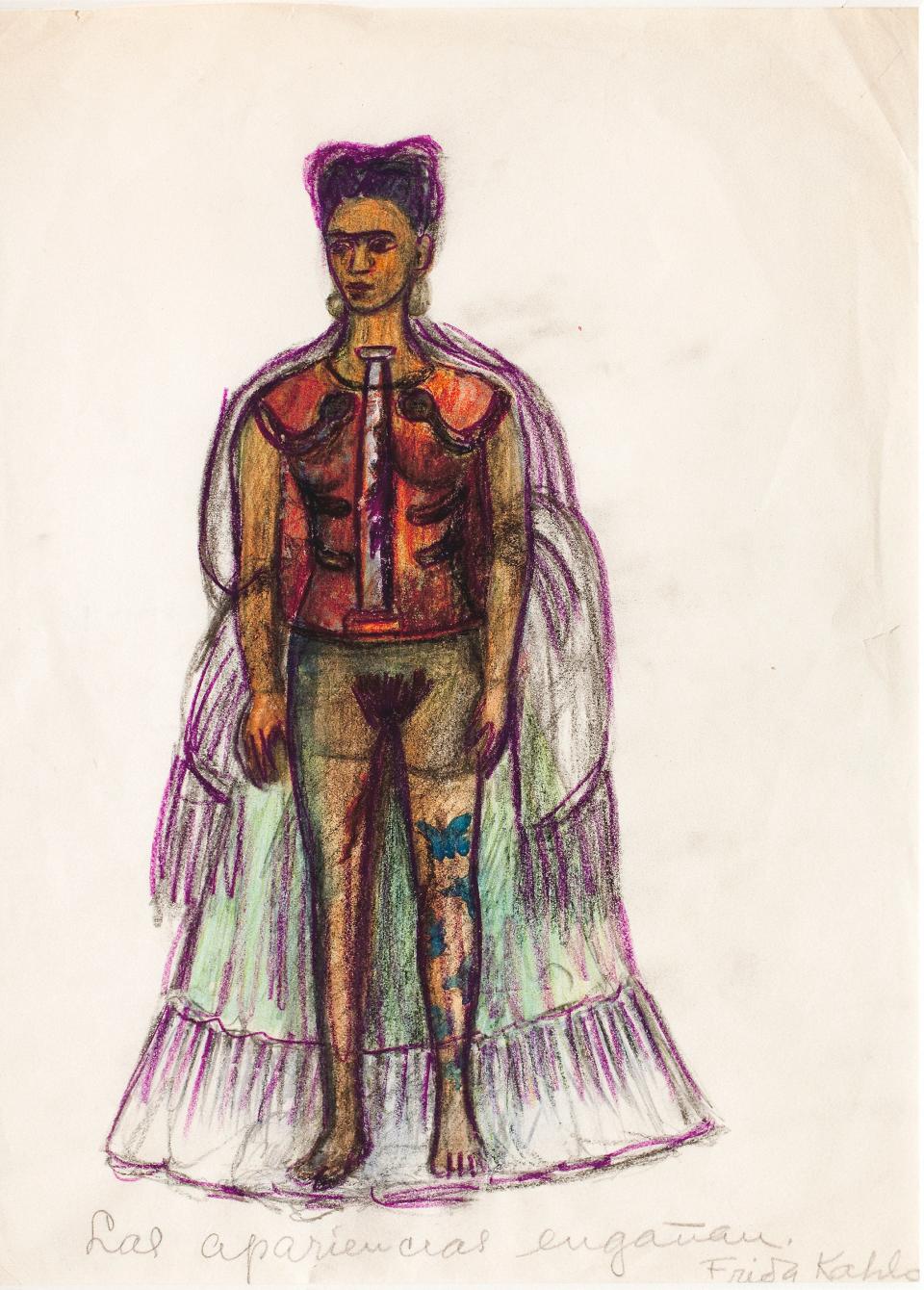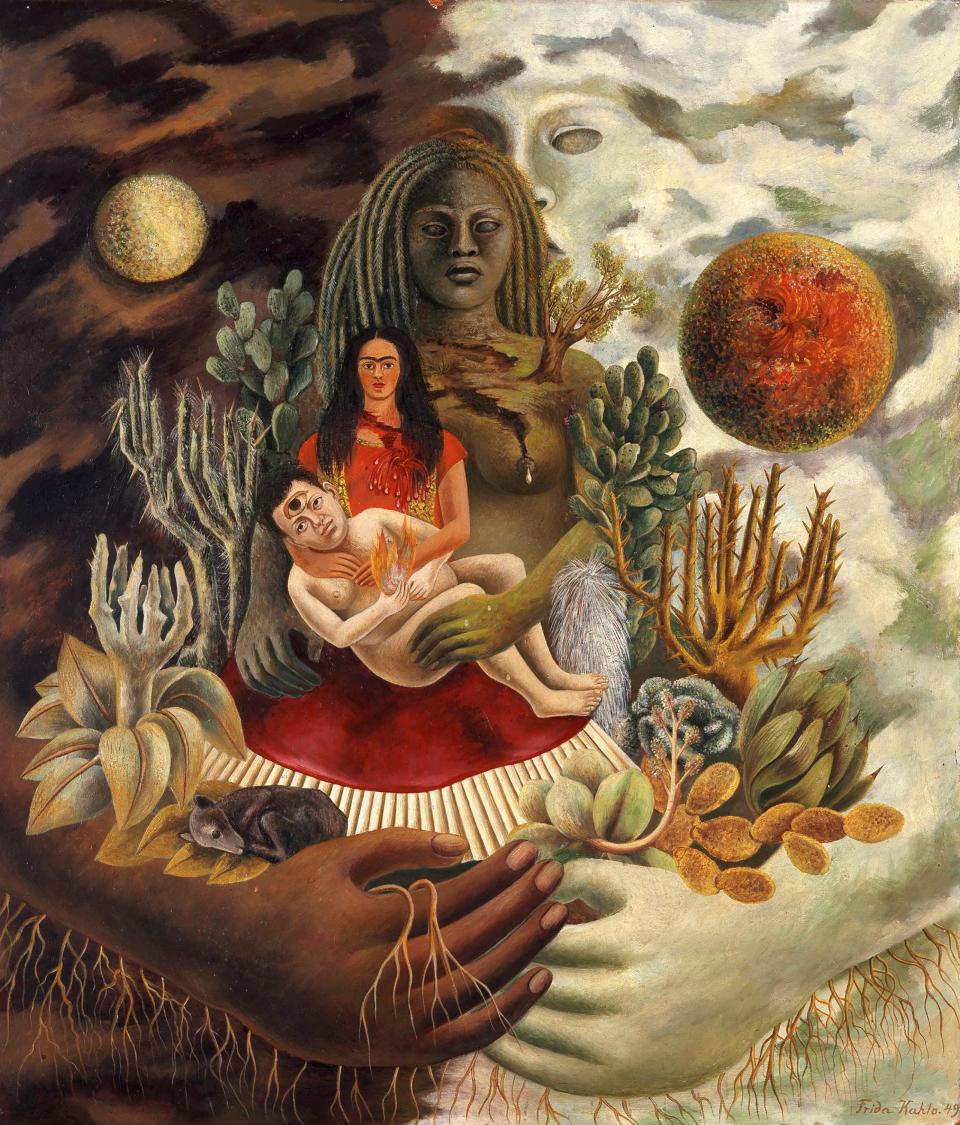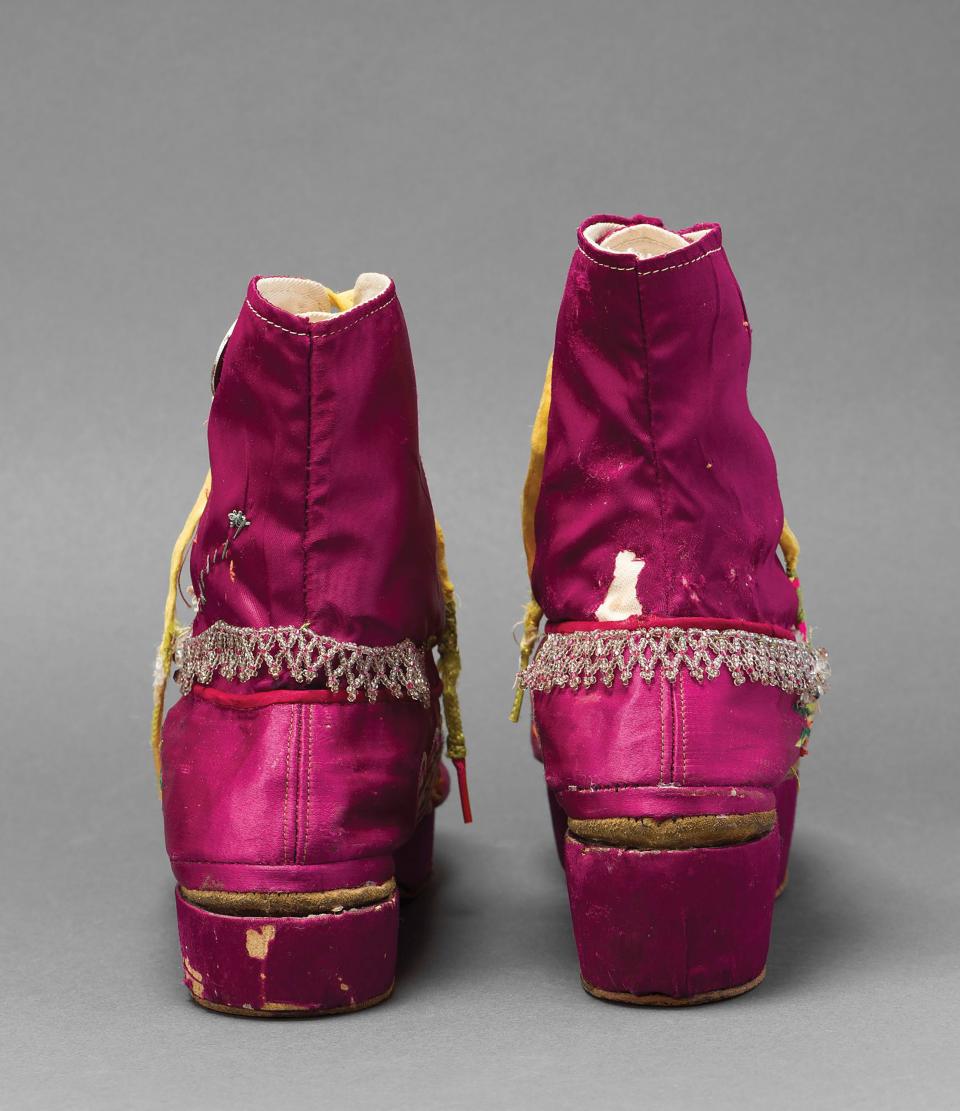Gypsy Sport’s Rio Uribe on the Importance of Frida Kahlo
Rio Uribe was relaxed and happy when, a few days after his much acclaimed Fall show (which landed a spot on Vogue’s Top 10 New York collections list), we met at the Brooklyn Museum of Art to walk through Frida Kahlo: Appearances Can Be Deceiving. First off, Uribe was curious to figure out where the title came from (on walking out we learned that it was the title of a self-portrait the artist had drawn). Kahlo, who was severely injured in a bus accident, was in some ways a master of subterfuge who used clothing to take on a new persona (such as when she wore men’s suits) and to hide her medically-required corsets. In other, important ways, the artists was transparent, rendering her pain and yearnings in paint on canvas. “Frida was so free,” noted Uribe. “She gave everything, in every self portrait, in every painting, in every corset… I mean, she was fully on display.” She was also unapologetic and political, as is Uribe, who, Vogue’s Chioma Nnadi has noted, “opened up a conversation about gender, size, and race in fashion that was desperately overdue.”
Born in Los Angeles to Mexican parents, Uribe grew up straddling two cultures. “I say I’m Mexican, but Mexicans would disagree,” he says. Somehow feeling like he didn’t fit in increased his pride in his heritage, sort of like Kahlo (who was half German and used clothes politically to express Mexicanidad), the designer observes. That’s not the only point of commonality between the two. Read on to discover more as Uribe talks to Vogue about breaking down barriers, thinking beyond walls, and what Frida means to him.
Why did you choose to become involved in fashion?
Growing up I used fashion to express myself. I was drawn to it naturally; I always dressed my dolls and my G.I. Joes, so it’s always been there. I started working in retail at a young age and I learned a lot about people’s shopping habits and different types of taste. I didn’t have anyone in my family who worked in fashion or made clothing; I don’t know how to explain it, I just knew that that was I wanted to do. Art felt like…. I didn’t understand art, per se. Like painting, I understood the medium, but for me fashion is like sculpture.

“Frida’s corsets are so powerful. They say when life hands you lemons, make lemonade. In Frida’s case, life handed her one disaster after another and she made a masterpiece of every single one.”
Plaster corset, painted and decorated by Frida Kahlo, Museo Frida Kahlo.
What do you feel Gypsy Sport is giving to fashion that it was lacking?
Maybe the DIY sensibility wasn’t there so much—but for sure, my casting and inclusion is what fashion was missing, the diversity. The models that we select, the people that we represent with every show, and every photo, editorial, and campaign. That was definitely missing, and it’s still missing in a lot of ways from fashion. I’m learning now to make Gypsy Sport a business and make a living out of the clothes. The first couple of years I was really just having fun and making weird clothes that my friends could wear. Now I’m noticing people are interested in the chain mail and the DIY, there are certain parts of the collection people really gravitate toward, so I’m focusing more on building that aesthetic.

Collection of Museo Frida Kahlo.
Frida had a one-off style; you create a lot of unique pieces. What appeals to you about her way of dressing?
When we get orders they’re made to the person’s body and liking. Frida did the same thing; I was reading that she had a lot of things made custom for her in the fashions of the Istmus of Tehuantepec, in Oaxaca. I like how she incorporated European ideas and menswear ideas into her style. What I do is definitely different, but I find a relationship in the sense that she incorporated a lot of tchotchkes and garbage and random findings into her paintings and into her wardrobe, and I definitely do that with Gypsy Sport. Because of that it’s sometimes hard to replicate something, but that’s also why a piece is so special and unique; you can never find those little toys again or that random spool of thread with gold flecks on it. I love how unique they are and making them work; Frida was doing that with everything.

“I love the way Frida celebrated Mexicanidad in her dress and her art. Her wardrobe was beautiful and traditional but also very loud and politically charged. Her work was no different. What we all perceived as surrealism was actually her reality. Like a yin yang, all of the torment and all of the beauty in her life found a balance through her artworks.”
Frida Kahlo (Mexican, 1907–1954). The Love Embrace of the Universe, 1949. Oil on Masonite, 27 ½ x 23 ¾ in. (70 x 60.5 cm). The Jacques and Natasha Gelman Collection of 20th Century Mexican Art and the Vergel Foundation.
Have you incorporated any Mexican dress traditions into your work?
I use a lot of Mexican fabrics and I also make some of my pieces in Mexico, but I haven’t used Mexican imagery since my collections have been posted on Vogue. My early collections had a lot of Mexican [references].
Your grandmother crochets for you, right?
She used to, but she stopped because she has arthritis. Crochet has always been part of my family; I guess that was one fashion element that was part of my growing up. My grandmother’s couches and furniture and everything were always covered in these big, beautiful but dusty crochet panels, and they’re something I’ve always loved. Crochet and embroidery are two things that I adapted in my own fashion from Mexico and they [are techniques] that I’ll always use.
I read that you prefer to describe yourself as indigenous; is that so?
Well, growing up in the United States and going to Mexico in the summers, I always felt too American to truly be close to my Mexican family and my Mexican friends, but then there was also this face—I look just like them. So I was like, I have the same blood as you, I am an indigenous person. Just by circumstance I was raised in an English-speaking household, watching American TV, and wearing American brands; I recognized that was a privilege and that was what separated me from my relatives in Mexico. So there was always this divide between me and Mexico, but it almost made me—and maybe this is also the case with Frida—it almost made me want to be more Mexican, to want to embrace that identity even more. I still feel that there’s something that stops me, but I say indigenous because I was born in Los Angeles and that is indigenous Mexican territory—or it was—and so I feel that whether I was born before or after it became part of the US, I’m from the indigenous nation of Mexico.
What do you think about Frida being a symbol of Mexico?
I think she recognized how important that was and was willing to be a caricature, in a sense, but also the Madonna of Mexico.

Oil on hardboard, 30 x 24 in. (76 x 61 cm).
The Jacques and Natasha Gelman Collection of 20th Century Mexican Art and the Vergel Foundation.
Frida incorporated Catholic iconography in her work. Have you?
I definitely have pulled a lot of references from the costumes of different religions, from Catholicism to Islam to Buddhism, but I've never used their icons. I make a conscious effort to steer away from using any symbols [unless] all of the symbols [are] included because I am trying to be very inclusive and using one specific symbol can come across as selective.
How is Frida an important figure to you?
I’ve always been inspired by Frida. I think growing up she was one of our icons. There were photos of her in our house, my mom loved [Frida’s] fashion and the traditional Oaxacan clothing. I never really knew how much of an impact Frida would have on my fashion, but I think the gender fluidity and the queerness of her self presentation was always what inspired me the most—and of course the color, and the strength of everything she wore and everything she did—but I guess subconsciously, the queerness was always in there. When I learned that she was a bisexual, that was exciting to me, because I thought, Oh, not only is she Mexican like me, but she’s also kind of gay. And if my mom loves Frida she might love me just as much. I think that was an important [thing] to discover about her later on in my life.
Are there any other points of commonality?
I think another thing I can relate to in a big way is her struggle to balance art as her industry and art as her being. I create so much but I only show what I think needs to be shown, whereas Frida was so free and she gave everything…. I mean, she was fully on display. I think it’s so liberating to see how free she was with herself and her art, and I’m definitely striving to be more like that.

“Frida might have been disabled in many ways, but she made sure to be so with style and grace. For example, one of her legs was shorter than the other, so she wore custom made velveteen boots in solid magenta color so the mismatched heel heights were not noticeable.”
Customized silk ankle boots.
Given the current political climate, the timing of this exhibition is very powerful. Why do you think Frida remains such an important cultural lightning rod?
There are so many reasons I think she’s important: for the strength that she represents to women; for the strength that she represents to Mexico. I think the way she embraced the traditional dress of Mexico, and celebrated all of the artisanal traditions, and brought them to a modern audience, I think was very important. I think in today’s political climate, with talks of a wall and all of these things, it’s so refreshing to see her work here, in Brooklyn, in one of the best museums in New York [where it can] be on view and appreciated by all the people in America. I think that shows that we can find beauty and connection and expression with each other beyond borders, beyond walls. Frida was really doing that from the beginning and it seemed inherent, it didn’t feel calculated.

3.1943
“Frida embraced her masculinity and she often used her art to express it. Gender roles are much looser today; Frida was ahead of her time in that sense.”
Frida Kahlo (Mexican, 1907-1954). Self-Portrait with Cropped Hair, 1940. Oil on canvas, 15 ¾ x 11 in. (40 x 27.9 cm).
Museum of Modern Art, Gift of Edgar Kaufmann, Jr.
What’s the strongest impression you take away from the exhibition?
To me, something about Frida’s masculine features and masculine face wearing a super ornate, hyper feminine wardrobe is the most interesting thing about her, when everything else is gone. I just love the mash-up of gender that she represents. And then to be able to dress herself in a man’s suit and carry that off as well…. That’s what Gypsy Sport is all about.
This interview has been edited and condensed.


